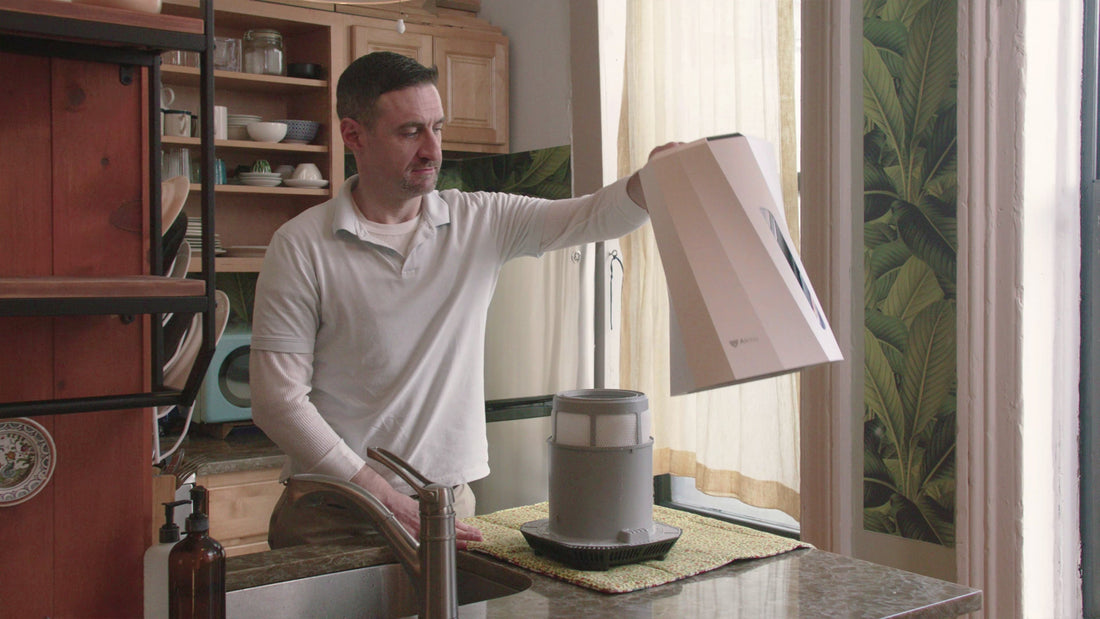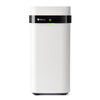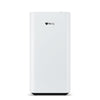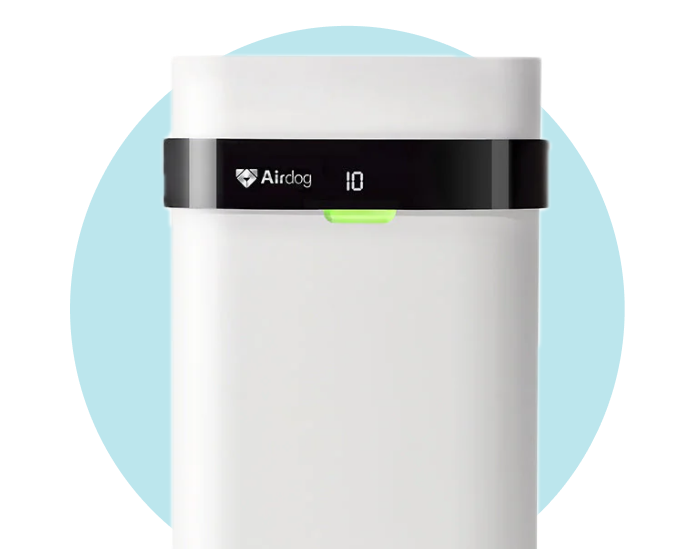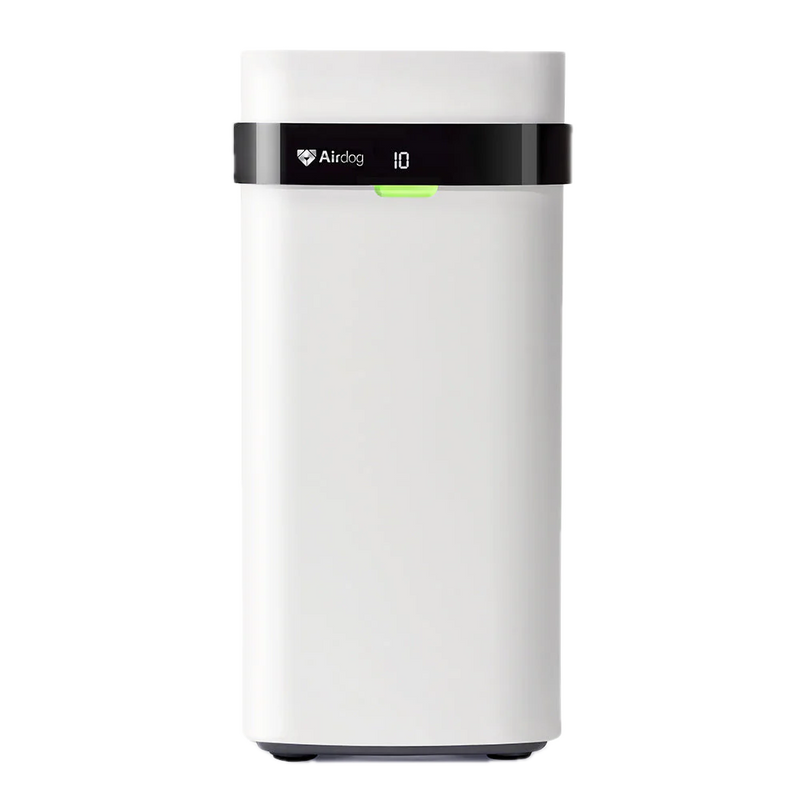Maintaining the air quality in your home is especially important during dry seasons, and humidifiers play a key role in keeping indoor spaces comfortable and healthy. However, these devices can become breeding grounds for mold, bacteria, and mineral buildup if they aren’t cleaned regularly. Neglecting proper maintenance can compromise both your humidifier’s efficiency and your family’s health.
In this guide, we’ll walk you through how to clean a humidifier effectively, covering everything from using distilled water to prevent mineral deposits to following EPA-recommended cleaning routines. You’ll gain actionable insights to keep your device running efficiently, extend its lifespan, and ensure the air in your home stays fresh and safe to breathe.
Why Proper Humidifier Maintenance Matters
Humidifiers quietly improve indoor air quality, but without proper care, they can become a breeding ground for mold and bacteria, which may negatively impact your health. Allergens and microbes dispersed from a dirty humidifier can trigger respiratory issues, worsen allergies, and even affect sleep quality.
Regular maintenance is essential for:
-
Preventing Health Risks: Mold and bacteria thrive in standing water. Frequent cleaning ensures your humidifier does not spread these harmful microorganisms.
-
Optimizing Performance: Mineral deposits from tap water can clog parts, reduce mist output, and shorten the device's lifespan.
-
Using Distilled Water: Opting for distilled or demineralized water minimizes mineral buildup and white dust, keeping your humidifier cleaner for longer.
-
Following Guidelines: The Environmental Protection Agency (EPA) recommends regular cleaning and proper care to maintain both safety and efficiency.
By prioritizing these practices, your humidifier becomes a reliable ally in keeping your home’s air comfortable and safe.
Types of Humidifiers and Their Maintenance Needs
Maintaining indoor air quality is paramount for a comfortable and healthful home environment. Among the devices at the forefront of ensuring this comfort are humidifiers, which come in various types, each with unique maintenance needs. Understanding these differences helps prevent microbial growth, mineral buildup, and other common issues.
Cool Mist Humidifiers
Cool mist humidifiers are popular for their safety and energy efficiency. They emit a cool vapor into the air, making them ideal for use around children and pets. However, their maintenance requires specific attention:
-
Daily Emptying and Drying: As recommended by the EPA, it's important to empty the water tank, dry all surfaces, and refill with fresh water daily to minimize bacteria and mold growth
-
Regular Filter Replacement: Many cool mist models use wick filters to absorb water from the tank and release it into the air. Wick filters should be replaced regularly to prevent microbial buildup.
-
Mineral Deposit Removal: Using distilled or demineralized water helps prevent the buildup of mineral deposits, a common issue with cool mist humidifiers due to their evaporative process.
Warm Mist Humidifiers
Warm mist humidifiers boil water to produce steam, which is then cooled slightly before being released into the air. The heating process offers the advantage of killing some bacteria and molds, but maintenance is still key:
-
Descaling: The boiling process can lead to mineral scale buildup inside the humidifier, requiring regular descaling with a mild acid like vinegar.
-
Weekly Cleaning: Warm mist humidifiers should be disassembled and cleaned weekly to ensure all parts are free from mineral deposits and bacterial growth.
Ultrasonic Humidifiers
Ultrasonic humidifiers use high-frequency vibrations to create a fine mist. These units are whisper-quiet and efficient but come with their own set of maintenance challenges:
-
Cleaning Ultrasonic Plates: The ultrasonic plate must remain clean to function properly. Any mineral buildup can interfere with the vibration mechanism, reducing efficiency.
-
Distilled Water Use: Use: Prevent white dust and microbial buildup by using water with minimal minerals such as distilled water.
Evaporative Humidifiers
Evaporative humidifiers are self-regulating, using a fan to blow air through a wet wick or filter. Their design minimizes over-humidifying but requires regular care:
-
Filter Maintenance: The wick filter captures minerals and impurities from the water. Over time, these filters can become saturated and less effective, requiring replacement.
-
Prevent Mold and Bacteria: Regular cleaning of the water tank and filter area is necessary to prevent mold and bacteria from developing on the wet surfaces.
Airdog MOI Humidifier
The Airdog MOI humidifier combines ease of use with advanced features that make maintenance simpler:
-
Easy disassembly, making cleaning quick and thorough.
-
Reusable components and dishwasher-safe parts reduce the time and effort needed to prevent microbial growth.
-
Ultrasonic misting technology paired with distilled water minimizes mineral buildup and white dust.
By choosing a humidifier designed with maintenance in mind, like the Airdog MOI, you can enjoy cleaner, healthier air with less hassle.
Step-by-Step Guide: How to Clean Your Humidifier
Maintaining a clean humidifier is crucial for its performance and your family’s health. Here’s a detailed, step-by-step guide on how to clean a humidifier effectively.
Disassembly and Safety
-
Unplug the Humidifier: Always ensure the device is unplugged before starting the cleaning process.
-
Consult the Manual: Each model has specific instructions for disassembly. Refer to the manufacturer’s manual to avoid damaging the unit.
-
Remove the Water Tank: Empty any remaining water and detach the tank from the base.
-
Disassemble Removable Parts: Carefully take apart any removable components such as the tank cap, mist nozzle, and filter (if applicable).
Cleaning with Vinegar
-
Descaling the Tank: Fill the tank with a mix of one part distilled white vinegar to two parts water. Let it sit for at least 30 minutes, then scrub with a soft brush to remove mineral deposits.
-
Disinfecting the Base and Components: Dampen a cloth with distilled white vinegar and wipe down the base and any non-electrical parts. For hard-to-reach areas, use a small brush or cotton swabs.
-
Rinse Thoroughly: After descaling and disinfecting, rinse all parts several times with water to ensure no vinegar residue remains.
Deep Cleaning with Bleach
-
Prepare a Bleach Solution: Mix one teaspoon of bleach with a gallon of water. This will be used to kill any persistent bacteria or mold.
-
Soak Components: Submerge the water tank and any washable components in the bleach solution for about 30 minutes.
-
Scrub and Clean: Use a soft brush or cloth to scrub the tank and components gently. Pay special attention to any areas with visible mold or slime.
-
Rinse Thoroughly: Rinse each part with water at least three times to ensure all bleach has been removed. It's crucial to eliminate any chemical residues to maintain air quality.
Drying and Reassembly
-
Air Dry: Let all components air dry completely on a clean towel.
-
Reassemble the Humidifier: Once dry, reassemble the unit carefully, making sure all parts fit securely and correctly.
-
Replace filters if applicable, following manufacturer instructions.
By following these detailed steps, you ensure your humidifier functions efficiently, extending its lifespan and improving your home's air quality. Remember, a clean humidifier is more than just a functional appliance; it's an investment in your well-being.
Preventing Mold and Bacteria Growth
Preventing microbial growth ensures your humidifier contributes to healthy indoor air.
-
Regular Cleaning: Clean every three days per EPA guidelines.
-
Keep Surroundings Dry: Use a hygrometer to monitor humidity (30–50%) and place the humidifier away from walls and furniture.
-
Distilled or Demineralized Water: Reduces minerals and prevents white dust.
-
Antimicrobial Cartridges: Offer additional protection, but do not replace cleaning.
By following these practices, you can prevent your humidifier from becoming a source of health risks.
Troubleshooting Common Humidifier Problems
Humidifiers play a critical role in maintaining comfort and health in our homes, particularly during dry seasons. However, like any household appliance, they can encounter issues that affect their performance. Addressing common problems such as white dust formation, unusual odors, and decreased mist output ensures the device continues to enhance indoor air quality effectively.
White Dust Formation
Understanding the Cause: White dust results from minerals in unfiltered water used in humidifiers. When water turns into mist, these minerals are left behind and settle as dust on surfaces.
Solutions:
-
Use Demineralization Cartridges: These cartridges filter out minerals from the water before it's misted into the air, significantly reducing white dust.
-
Opt for Distilled or Demineralized Water: To prevent white dust, fill your humidifier with water that has minimal mineral content.
-
Regular Cleaning: Ensure the water tank and other parts of the humidifier are clean to prevent mineral buildup that could contribute to white dust.
Unpleasant Odors
Identifying the Source: Musty or unpleasant odors often indicate mold or bacterial growth within the humidifier, a result of stagnant water or improper cleaning.
Solutions:
-
Thorough Cleaning with Vinegar: A natural disinfectant, vinegar can effectively remove mold and bacteria. Fill the tank with a mixture of water and vinegar, let it sit for an hour, then rinse thoroughly.
-
Dry Between Uses: Empty the tank and dry all parts of the humidifier between uses to prevent microbial growth.
-
Replace Filters Regularly: If your humidifier uses a filter, replace it as per the manufacturer's recommendations to avoid odors caused by bacteria trapped in the filter.
Reduced Mist Output
Cause: Clogged nozzles or filters.
Troubleshooting Steps:
-
Check for Clogs: Mineral deposits can clog the humidifier's nozzles or filter, reducing mist output. Regular cleaning prevents and removes such blockages.
-
Inspect the Filter: A dirty or worn-out filter can restrict airflow and moisture. Examine the filter and clean or replace it if necessary.
-
Evaluate the Humidifier's Settings: Ensure the humidifier is set to the correct output level and that there aren't any electronic issues hindering its performance.
By addressing these common humidifier problems promptly and effectively, you ensure the device functions optimally, contributing to a healthier and more comfortable indoor environment. Remember, the key to avoiding most humidifier issues lies in regular maintenance and the use of appropriate water types to minimize mineral buildup and microbial growth.
Innovative Humidifier Maintenance Hacks
Maintaining a humidifier ensures not only its efficiency but also the health and comfort of your home environment. Let's explore some of these methods and tools that can help keep your humidifier spotless and functioning at its best.
Tank Cleaning Balls and Brushes
-
Tank Cleaning Balls: Designed to remove algae and mineral deposits, these small, nontoxic balls can be dropped into the water tank. They work by agitating the water, dislodging buildup without the need for scrubbing.
-
Specialized Brushes: Brushes with long, narrow handles and bristles shaped to fit into tight spaces make cleaning the nooks and crannies of your humidifier a breeze. They are especially useful for reaching into the water tank and around the misting mechanism, areas often overlooked during regular cleaning.
Humidifier Tablets
-
Water Freshening Tablets: These tablets are designed to be dropped into the humidifier’s water tank. They help keep the water fresh, reducing the growth of bacteria and unpleasant odors between deep cleaning sessions.
Replacement Parts: Filters and Cartridges
-
Regular Replacement: Keeping a stock of essential replacement parts, such as filters, cartridges, and even spare tanks, ensures that your humidifier remains operational without interruption. Regular replacement of these components according to the manufacturer’s guidelines prevents the accumulation of harmful pathogens and mineral deposits.
These tools reduce maintenance time while ensuring your humidifier runs efficiently.
Keep Your Humidifier Clean and Effective
Regular and thorough cleaning of your humidifier is essential for maintaining healthy indoor air. From understanding different types of humidifiers to implementing step-by-step cleaning routines and preventive measures, you can protect both your family and your device.
Investing in the Airdog MOI humidifier makes this process simpler and more effective. Its easy-to-clean design, reusable components, and advanced technology reduce microbial risks, prevent mineral buildup, and deliver consistent, healthy humidity to your home. By following proper cleaning techniques and using a high-quality humidifier, you can maximize air quality, enhance comfort, and ensure a healthier living environment for you and your loved ones.

